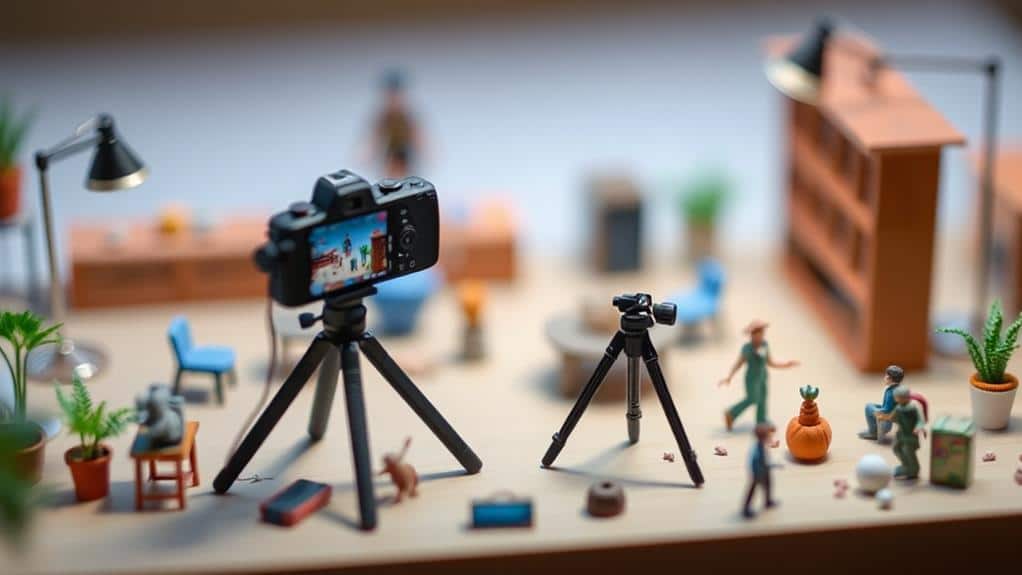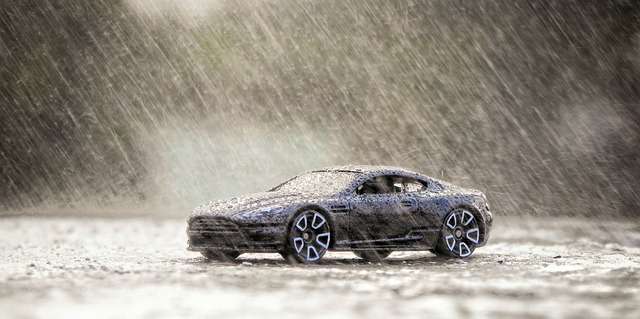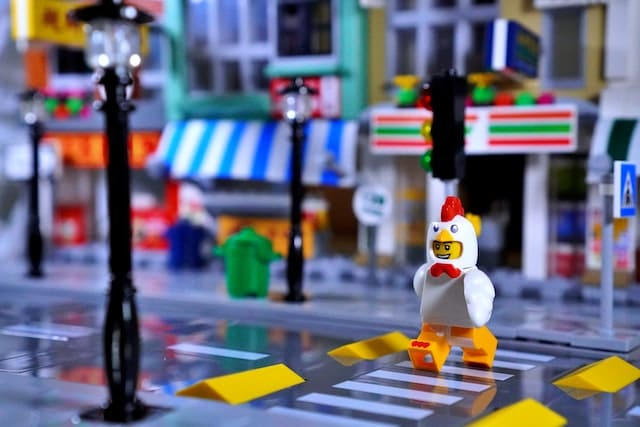To excel in toy scale photography, focus on maintaining proper scale ratios and composition simplicity. Guarantee your toys and props harmonize by matching their scales, and let negative space highlight your subjects. Choose uncluttered backgrounds that enhance rather than detract. Opt for natural or diffused lighting to avoid harsh shadows. Don't overlook depth of field; it can either isolate or overwhelm your subject. Experiment with camera angles for dramatic storytelling and avoid over-reliance on wide-angle lenses that can distort. Attend to color consistency and don't skip post-processing to refine your images. There's more to uncover as you perfect your technique.
Ignoring Proper Scale Ratios
When capturing the charm of toy photography, one common pitfall is overlooking proper scale ratios. You might be enthusiastic to shoot your favorite action figure or model car, but if the scale is off, the result can be jarring. Imagine a scene where a toy soldier towers over a toy car, disrupting the intended narrative. Confirming that your toys are to scale with each other is vital for creating believable scenes and maintaining visual coherence.
To avoid this mistake, start by familiarizing yourself with the scales of your toys. Many toys come with scale information on their packaging, such as 1:12 or 1:18. Take the time to match toys that belong to the same scale. This guarantees they look harmonious when photographed together.
You can also use props to enhance the sense of scale. Incorporate items like miniature furniture, trees, or backdrops that match the toys' scale, adding depth and realism. Another tip is to play with camera angles and perspectives. By adjusting your camera's position, you can emphasize or diminish the perceived size of objects, helping to achieve the perfect scale balance in your photos.
Overlooking Background Details
Often, photographers focus so intently on their subjects that they overlook essential background details, which can detract from the impact of their toy photos. You might capture the perfect pose or expression, but if the background is cluttered or distracting, it can steal the viewer's attention away from your main subject. A messy room, unwanted objects, or even a stray wire can shift the focus from the toy to the chaos behind it.
To avoid this, always take a moment to assess your background before snapping a photo. Look for elements that complement rather than compete with your subject. Sometimes, a simple, clean background works best, allowing the toy to stand out. You can use props or textures that add depth and context, but make sure they don't overshadow the toy itself.
Consider the background's color and lighting, as these can affect how your toy's details are perceived. A neutral or contrasting background can enhance your toy's features, while a busy or mismatched one might muddle them. By paying attention to these details, you ensure that your photos emphasize the toy, creating a more powerful and engaging image.
Using Inappropriate Lighting

Beyond ensuring a clean and complementary background, lighting greatly influences the outcome of your toy photography. Choosing the right type of light can make your miniature subjects appear lifelike and enchanting. Natural light is your best friend, offering soft, even illumination that enhances colors and details. However, avoid harsh midday sun, as it creates strong shadows and overexposed highlights. Instead, aim for early morning or late afternoon, when the light is diffused and warm.
When shooting indoors, avoid using the camera's built-in flash. It often results in flat, unappealing images with harsh shadows. Instead, utilize diffused lighting sources like softboxes or LED panels. Position these lights strategically to minimize shadows and highlight your toy's features. Experiment with angles to find the most flattering lighting setup.
Also, watch for unwanted reflections, especially if your toys have glossy surfaces. Adjusting the angle of your lights or using a polarizing filter can help reduce glare. Don't forget to adjust your camera's white balance for the lighting conditions to maintain accurate colors. Understanding and manipulating lighting will transform your toy photography, elevating your images and making them truly stand out.
Failing With Depth of Field
Depth of field is a crucial element that can make or break your toy photography. If you don't get it right, your photos may lack the impact you're aiming for. A shallow depth of field can blur essential details, leaving your toys looking like indistinct blobs. You want those details to stand out, making the toys come alive in your images. On the other hand, an overly deep depth of field might clutter the image with too much background detail, distracting from your subject.
To avoid these pitfalls, start by understanding how aperture affects depth of field. A wider aperture (lower f-stop number) creates a shallow depth of field, which is great for isolating your toy from the background. However, be cautious not to blur the toy itself. Conversely, a narrower aperture (higher f-stop number) increases depth of field, which can be useful when you want both the toy and background in focus.
Experiment with different settings. Take test shots and review them critically. Look for balance between focus and blur; this will guide the viewer's eye to the main subject. Mastering depth of field will elevate your toy photography, making each shot enchanting.
Neglecting Camera Angles

When capturing toy photography, neglecting camera angles can lead to flat and uninspired images. The angle at which you photograph your toys plays a vital role in storytelling and creating dynamic compositions. By experimenting with various angles, you can transform a simple scene into an engaging narrative. A low angle can make your toy appear larger than life, adding drama and intrigue. Conversely, a high angle might convey vulnerability or a bird's-eye view, offering a fresh perspective.
To avoid common pitfalls, always consider the story you want to tell. Ask yourself how the angle enhances or detracts from the scene. Try to mimic angles seen in movies or comic books, as they often provide inspiration for dramatic tension or action. Don't be afraid to get creative—move around your setup, tilt your camera, and even lay on the ground if necessary.
Misjudging Focus Points
A common mistake in toy photography is misjudging focus points, which can lead to blurry images and distract from the subject. When photographing toys, it's essential to decide what part of the scene you want to be sharp and clear. If you don't choose the right focus point, the viewer's attention might drift away from the main subject. For instance, if you're capturing a toy car, you'll want the focus on the front grill or the headlights, not the background or wheels.
To get it right, start by manually selecting your camera's focus points. Most cameras allow you to choose where the focus should be, giving you control over the image's sharpness. Avoid relying on auto-focus, as it might not always prioritize the part of the toy you intend to highlight. Additionally, use a narrow aperture for a deeper depth of field if you want more of the scene in focus, or a wider aperture if you want to blur the background and isolate the toy. Practice adjusting the focus points and apertures to see how they affect your shots. With a bit of attention, you'll capture crisp, engaging toy photos.
Overusing Wide-Angle Lenses

While wide-angle lenses can add drama and perspective to toy photography, overusing them might distort your subject and distract from the desired composition. They can make your toy appear exaggerated in size, altering proportions that should remain true to the character or object you're capturing. This distortion can inadvertently change the mood of your image, turning a joyful scene into something uncanny.
To avoid this, you should carefully consider your framing. Instead of defaulting to a wide-angle lens, experiment with different focal lengths that suit your subject better. A standard or telephoto lens might provide a more natural look, keeping the toy's proportions intact. Remember, the goal is to highlight the toy as the star of the scene, not to overwhelm it with unnecessary lens effects.
Pay attention to your positioning as well. Getting closer with a wide-angle lens can increase distortion, so maintain a respectful distance. You should also be mindful of the background, as a wide-angle lens can pull in more elements than intended, cluttering your composition. By using wide-angle lenses judiciously, you can guarantee your toy photography remains compelling and true to your artistic vision.
Disregarding Color Consistency
Just as careful lens choices can enhance your toy photography, maintaining color consistency is equally important. Disregarding this aspect can make your miniature scenes look disjointed or unappealing. When colors clash or appear inconsistent, it distracts from the story you're trying to tell with your toys. You've got to guarantee that your lighting and white balance are set correctly to avoid unintentional color shifts.
Start by choosing a color palette that complements your subject. If your toy has vivid colors, select a background and props that enhance rather than overwhelm those hues. Consistent lighting is essential, so using the same light source or type of bulb throughout your shoot helps maintain uniformity. Natural light can be unpredictable, so if possible, shoot at the same time of day or use artificial lighting to control conditions.
Post-processing is your chance to refine color balance. Use editing software to correct any mismatches and keep an eye on saturation levels to prevent colors from looking unnatural. By paying attention to these details, you'll create cohesive images that draw viewers into your toy-sized world, making your work truly stand out.
Overcomplicating Composition

Simplify your scenes to avoid overcomplicating composition in toy photography. When you set up for a shot, it's tempting to add more elements than necessary, thinking it'll make your scene more interesting. However, too many details can overwhelm viewers and distract from the main subject. Focus on one or two core elements that tell the story you want to convey. This approach will lead to a more impactful image.
Consider using negative space to highlight your toy subject. Negative space provides breathing room around your object, drawing attention to it. This minimalist approach often enhances the overall composition, making your subject stand out more prominently. Remember, less is more.
Be mindful of the background. A busy or cluttered background can detract from your toy, making the scene feel crowded. Choose a simple backdrop that complements, rather than competes with, your main subject. You can experiment with plain colors or subtle textures that add depth without taking the spotlight.
Lastly, avoid unnecessary props. While props can enhance a scene, they shouldn't steal attention from the main focus. Select props that add value, not noise, to your composition. By keeping things simple, you'll create striking, memorable toy photographs.
Skipping Post-Processing Steps
Having crafted a clean and focused composition, the next step is to enhance your toy photography through thoughtful post-processing. Skipping this vital phase can leave your images flat and unpolished. Post-processing isn't about making drastic changes; it's about fine-tuning the details to bring out the best in your shot. Adjusting brightness, contrast, and sharpness can make your toys pop, while color correction guarantees the hues are true to life.
Here's a simple guide to essential post-processing steps:
| Step | Description |
|---|---|
| Brightness/Contrast | Enhances light and shadow for a dynamic look. |
| Color Correction | Guarantees accurate color representation. |
| Sharpness | Highlights details, making toys stand out. |
| Noise Reduction | Eliminates graininess for a cleaner image. |
| Cropping | Refines composition by removing distractions. |
Frequently Asked Questions
How Can I Effectively Create Realistic Motion in Toy Scale Photography?
To create realistic motion in toy scale photography, use a slow shutter speed and gently move the toy. Experiment with angles and lighting to enhance the effect. Focus on details like dust clouds or water splashes for authenticity. Additionally, incorporating tools like a tripod can help stabilize your shots while allowing for creative motion blur effects. If you’re aiming for dramatic action scenes, consider using highspeed photography for toy figurines to capture precise moments, such as a figurine mid-jump or an explosion of debris. Combining these techniques elevates the storytelling potential of your images, making them more engaging and lifelike.
What Are the Best Techniques for Capturing Reflections in Toy Scale Scenes?
Use mirrors to enhance depth, water for natural reflections, and glossy surfaces for added realism. Position the light source strategically, adjust angles carefully, and edit meticulously. You'll capture stunning reflections and transform your toy scale scenes.
How Do I Choose the Right Camera Settings for Toy Scale Photography?
To choose the right camera settings, start with a low ISO for less noise, use a small aperture for depth, and adjust shutter speed for sharpness. Experiment with lighting angles to enhance details and create dynamic scenes.
Can I Use Smartphone Cameras for High-Quality Toy Scale Photography?
Absolutely, you can use smartphone cameras for high-quality toy scale photography. "The best camera is the one you have with you." Guarantee good lighting and focus on details to elevate your miniature captures to art.
What Are Some Common Misconceptions About Editing Toy Scale Photos?
You might think over-editing makes toy scale photos look better, but it often distorts the realism. It's also a misconception that filters always enhance images. Instead, focus on subtle adjustments to preserve the miniature scene's authenticity.
At a Glance
So, you've nailed toy scale photography by ignoring scale ratios, overlooking backgrounds, and embracing inappropriate lighting. You've mastered creating a blurry mess with depth of field and found the worst camera angles. Wide-angle lenses are your best friend, right? Who needs color consistency or simple compositions anyway? And post-processing—why bother? Ironically, by mastering these "techniques," you've discovered exactly what not to do. Ready for a do-over? Your miniatures will thank you.





